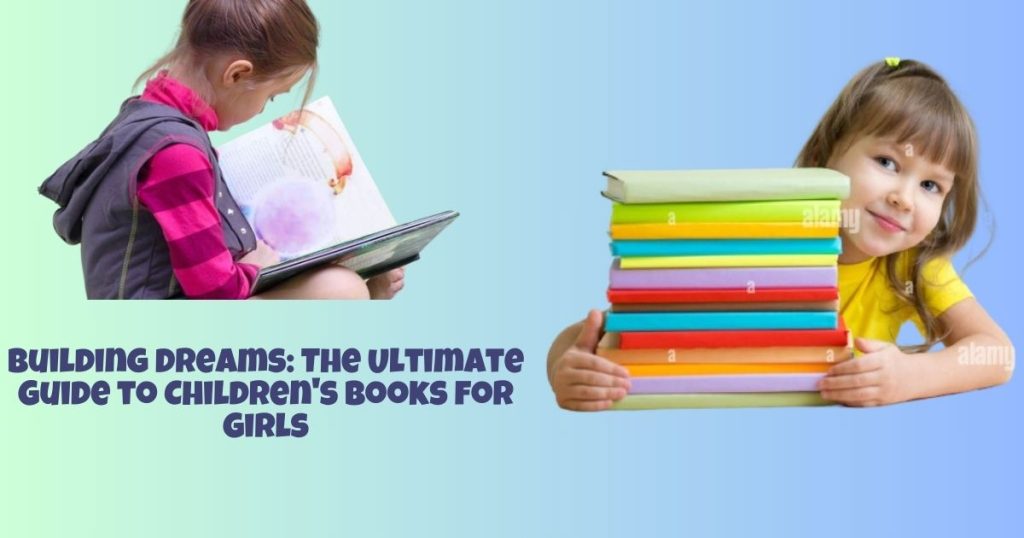
Introduction
Welcoming a baby girl into your life is a magical experience, filled with dreams and aspirations. The most meaningful gift you can give her is a love of reading. But where do you start? Children’s books are a great way to introduce your little one to the joys of literature. This guide will tell you everything you need to know about children’s books for girls, from the benefits of early reading to the best books for each stage of her development.
What are children's books?
Children’s books are specially designed to meet the developmental needs of infants and toddlers. They’re often made with durable materials to withstand chewing and bending, and feature bright colors, simple text, and cute pictures to grab baby’s attention.
Benefits of reading to children
Reading to your baby isn’t just about fun. It plays an important role in his cognitive development, language skills and emotional connection. Studies show that children who are read to regularly develop better language skills and are more likely to do well academically later in life.
Factors to consider
When choosing children’s books, consider the age of your child, the durability of the book, and the content. Children explore books with all their senses, so sturdy, chewy books are essential.
Age-appropriate content
Choose books that match your child’s developmental stage. For newborns, high-contrast images are ideal. As your child gets older, look for books with more complex pictures and simple stories.
Engaging the senses
Babies are drawn to black and white images and bold patterns. Books like “Black and White” by Tana Hobin are perfect for this stage.
High contrast images
Books with high-contrast pictures, such as “Look, Look!” Help stimulate your child’s vision and attention, by Peter Linenthal.
Simple texts and poems.
At this stage, babies begin to enjoy hearing your voice. Books with simple texts and rhymes, such as “Goodnight Moon” by Margaret Wise Brown, are excellent choices.
Interactive elements
Books with interactive elements, such as “Pet the Bunny” by Dorothy Kinhardt, help engage your child and develop motor skills.
Rhyming and rhythm
Children love the rhythm and repetition found in books such as “Brown Bear, Brown Bear, What Do You See?” By Bill Martin Jr
Touch and feel the books.
Books with different textures, such as “It’s Not My Puppy” by Fiona Watt, are fantastic for sensory exploration.
Stories and pictures
As your baby grows into a toddler, he will begin to enjoy simple picture stories. Eric Carle’s “The Very Hungry Caterpillar” is a timeless favorite.
Early learning topics
Books that introduce concepts like colors, shapes and numbers, such as “The First 100 Words” by Roger Priddy, are great for this age group.
Introduction to alphabets and numbers
Educational books like Christian Engel’s “ABC Baby Signs” help introduce your toddler to the alphabet and basic signs.
Learning colors and shapes
Books like “Color Zoo” by Lois Ehlert make learning about colors and shapes fun and interactive.
Timeless stories
Classic stories like “Goodnight Moon” and “The Tale of Peter Rabbit” by Beatrix Potter have been loved for generations and continue to captivate young readers.
Why Classics Matter
Classics offer timeless wisdom and comfort, making them a wonderful addition to your child’s library.
Representation in children's books
Books that reflect diverse cultures and experiences, such as “Hear Love” by Matthew A. Cherry, help your child understand and appreciate different backgrounds.
Benefits of Diverse Books
Diverse books foster empathy, understanding, and a broader worldview, which are essential qualities for a well-rounded person.
Adding a personal touch
Personalized books, such as “I See Me!” Where your child’s name and likeness is included in the story, make the reading extra special.
Where to find them?
Many online retailers offer personalized children’s books. Websites like “Wonderbly” provide beautiful, custom-made books that will become treasured keepsakes.
Lift the flap and pop-up books.
Books with lift-the-flap and pop-up elements, such as “Dear Zoo” by Rod Campbell, create a sense of wonder and delight for your child.
Engaging children in reading
Interactive books keep your child engaged and make the reading experience more dynamic and enjoyable.
Creating your own stories
Why not create a unique story just for your child? Use photos, drawings and plain text to create a personalized book.
Contents and tips
Use a sturdy material like cardboard for pages and non-toxic markers for illustrations. This can be a fun and creative project that adds a personal touch to your child’s reading experience.
Making reading a routine
Consistency is key. Try to read to your child at the same time every day to create a comfortable routine.
Engage your child
Use different voices, facial expressions and gestures to bring the story to life. Encourage your child to touch the book and turn the pages.
Result
Reading to your baby is one of the most rewarding activities you can share. It builds a solid foundation for her cognitive and emotional development and fosters a lifelong love of reading. Start early, choose the right books, and enjoy this precious time together.
How early can you start reading to a child?
You can start reading to your baby right from birth. Even though she won’t understand the words, she’ll enjoy the sound of your voice and the intimacy of the experience.
What are the benefits of reading especially to a girl child?
Reading to a child helps her develop language skills, cognitive abilities and emotional connection. It also lays the foundation for academic success and a love of reading.
How do you choose the best children's book?
Consider your child’s age and developmental stage, the durability of the book, and its content. Look for books with bright colors, simple text, and attractive pictures.
Are there children's books that promote diversity?
Yes, many children’s books feature diverse characters and stories. Books like “Hair Love” by Matthew A. Cherry and “Last Stop on Market Street” by Matt de la Peña are great examples.
Can you make your own children's books at home?
Of course! Making DIY children’s books can be a fun and personal way to share stories with your child. Use images, drawings and simple text to create a unique book.
